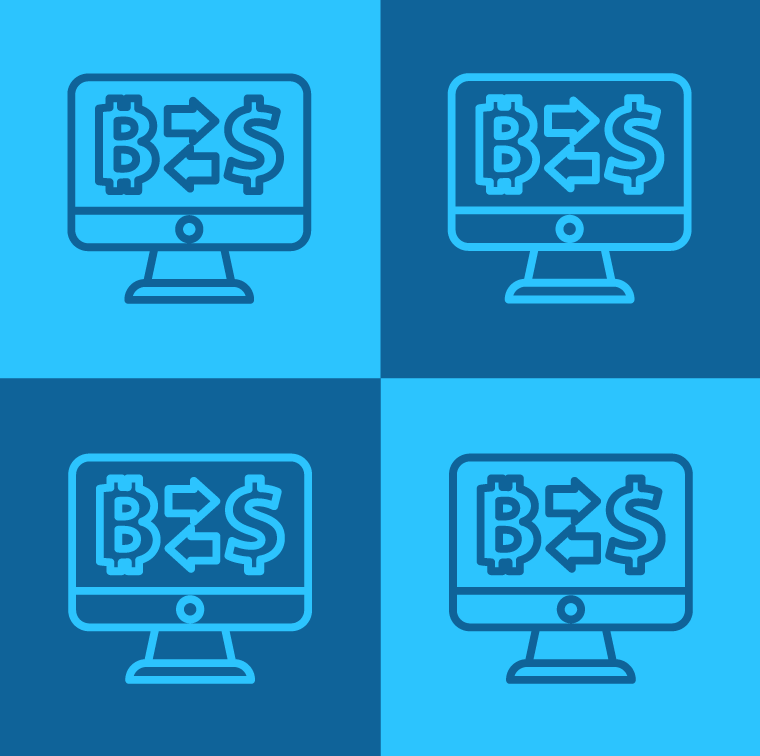Understanding Leverage Trading in Crypto: How to Amplify Your Gains (+Possible Risks)
In this article, we’ll dive into leverage trading crypto. We will examine how leverage trading works, some real-world examples of leverage trading crypto, and the potential benefits and risks. We’ll also provide tips on effectively using leverage trading to maximize your gains while minimizing risk.

What is leverage trading crypto?
What is leverage trading crypto, you ask? It’s a bit like playing with fire. You can burn your fingers if you’re not careful. But if you know what you’re doing, you might end up with a pocketful of cash! So, let’s break it down.
Leverage trading crypto is when you borrow funds from a broker to increase your position in a trade. This allows you to magnify your gains without putting up the full amount of capital. In other words, you’re using leverage to control a larger portion of an asset than you could with your own money alone.
But beware – while you can amplify your gains using leverage trading, you can also experience significant losses! Thus, as with any investment strategy, it’s important to do your due diligence and understand the risks before diving in.
Now that you know what leverage trading crypto is, let’s look at how it works.
How does leverage trading work in crypto?
Leverage trading in crypto works similarly to leverage trading in other financial markets. It involves borrowing funds to trade a more significant position than you could with just your own funds.
Let’s say you have $1,000 to invest in Bitcoin. With no leverage, you could only buy $1,000 worth of Bitcoin. However, by leverage trading crypto, you could borrow funds from a broker or exchange to amplify your position.
For example, if you use 2x leverage, you can effectively double your trading power, meaning you could buy $2,000 worth of Bitcoin. If the price of Bitcoin went up by 10%, you would earn a 20% profit ($400) compared to a 10% profit ($200) if you had invested without leverage.
However, it’s important to note that leverage trading can also amplify losses. For instance, if the price of Bitcoin goes down by 10%, you would lose 20% ($400) instead of 10% ($200).
That’s why it’s important to be cautious when using leverage trading in crypto. Always ensure you understand the risks involved and only use leverage if you are comfortable with the potential downsides.
Examples of Leverage Trading Crypto
Looking for real-world examples to help you better understand how leverage trading crypto works? Here are three examples and possible outcomes of using leverage trading in crypto.
- Let’s say you have $5,000 and want to invest in Ethereum. You decide to use 3x leverage. This allows you to borrow an additional $10,000 from a broker or exchange. With your $15,000 total in trading power, you buy $15,000 worth of Ethereum. If the price of Ethereum went up by 5%, you’d earn a profit of $750 (5% of $15,000) vs. $250 (5% of $5,000) if you invested without leverage. However, if the price of Ethereum goes down by 5%, you would lose $750 instead of $250.
- You have $10,000 to invest in Bitcoin, but you want to maximize your gains. So, you decide to use 5x leverage, which allows you to borrow an additional $40,000. With your $50,000 in total trading power, you buy $50,000 worth of Bitcoin. If the price of Bitcoin increases by 10%, you’ll earn a profit of $5,000 (10% of $50,000) instead of $1,000 (10% of $10,000) without leverage. However, if the price of Bitcoin goes down by 10%, you would lose $5,000 instead of $1,000.
- You have $2,500 to invest in XRP, but you want to take a more conservative approach to leverage trading. You decide to use 2x leverage, which allows you to borrow an additional $2,500. With your $5,000 in trading power, you buy $5,000 worth of XRP. If the price of XRP goes up by 2%, you will earn a profit of $100 (2% of $5,000) instead of $50 (2% of $2,500) if you had invested without leverage. However, if the price of XRP goes down by 2%, you would lose $100 instead of $50.
Remember, these are just hypothetical examples illustrating how leverage trading crypto works. Always do your own research and carefully consider the risks before using leverage trading.
Benefits vs Risks of Leverage Trading Crypto
What are the benefits and risks of leverage trading crypto? The table below highlights some of the most significant benefits vs risks.
| Benefits of Leverage Trading Crypto | Risks of Leverage Trading Crypto |
| Potential for amplified gains – leverage trading allows you to amplify your profits with a smaller initial investment. | Potential for amplified losses – using leverage can also amplifies your losses (and you can lose more than your initial investment). |
| Flexibility in trading strategies – leverage trading allows you to implement various trading strategies, including short selling and hedging. | Increased risk of liquidation – if the market moves against you, you may face a margin call and be forced to close your position at a loss. |
| Increased liquidity – leverage trading crypto can increase the market’s liquidity, making it easier to buy and sell cryptocurrencies. | High volatility – the cryptocurrency market is highly volatile, and leverage trading can increase the risk of rapid price swings and market manipulation. |
| Potential for diversification – using leverage allows you to diversify your portfolio with various cryptocurrencies. | Counterparty risk – leverage trading requires borrowing funds from the exchange or other traders, which can increase the risk of counterparty default. |
| Access to advanced trading tools – leverage trading often comes with advanced trading tools and analytics that can help you make more informed trading decisions. | Regulatory risks – the cryptocurrency market is largely unregulated, and leverage trading may expose you to additional regulatory risks. |
Leverage trading in crypto can be a powerful tool for traders looking to earn higher profits, increase their trading power, diversify their portfolios, or hedge against risk. However, it’s important to remember that leverage trading also comes with increased risks, including the potential for magnified losses.
Let’s look at the benefits and risks of leverage trading crypto.
Benefits of Leverage Trading Crypto
There are many benefits of leverage trading crypto. Here are a few reasons why traders may choose to use leverage.
- Greater Gains – perhaps the most apparent benefit of leverage trading is the ability to amplify your gains. Using leverage, you can earn higher profits than you would with just your own funds. This can be particularly attractive in a market like crypto, where prices can fluctuate rapidly, and significant gains can be made in a short period.
- Increased Trading Power – with leverage trading, you can increase your trading power without investing more of your own funds. This will allow you to take advantage of more opportunities and potentially earn more profits than you would with just your own funds.
- Diversification – leverage trading crypto also allows traders to diversify their portfolio. By using leverage, they can invest in multiple cryptocurrencies (or other assets) that they wouldn’t be able to with their own funds alone.
- Hedge Against Risk – leverage trading can also be used to hedge against risk. For example, suppose you believe that the price of a particular cryptocurrency will go down. In that case, you can use leverage to short-sell the cryptocurrency and potentially earn a profit if your prediction is correct.
What about the risks of leverage trading crypto? Let’s examine some of the most significant risks of this trading strategy.
Risks of Leverage Trading Crypto
While leverage trading can offer the potential for greater profits, it also comes with increased risks. Here are some risks to consider before using leverage trading in crypto.
- Magnified Losses – just as leverage can amplify your gains, it can also amplify your losses. If the market moves against you, your losses can be much greater than if you had only invested your funds. This means you could potentially lose more money than you have invested, leaving you with a negative balance.
- Margin Calls – when you use leverage to make a trade, you are essentially borrowing funds from a broker or exchange. This means that you need to maintain a certain level of equity in your account to cover the borrowed funds. If the value of your investments drops below a certain level, you may receive a margin call, which requires you to deposit additional funds into your account to cover the losses. Failure to meet a margin call can result in the broker or exchange liquidating your positions, potentially resulting in even greater losses.
- Market Volatility – crypto markets can be highly volatile, with prices fluctuating rapidly and unpredictably. This means that leverage trading crypto can be even riskier than in other markets, as the value of your positions can quickly move against you. In a highly volatile market, even a small price movement can result in significant losses.
- Counterparty Risk – when you use leverage trading, you are relying on a broker or exchange to provide you with the borrowed funds. If the broker or exchange goes bankrupt or is unable to fulfill its obligations, you could lose your entire investment.
It’s important to carefully consider these risks before using leverage trading in crypto. Always do your own research to make informed decisions, and never risk more than what you can afford to lose.
What happens if you lose a leverage trade in crypto?
If you lose a leverage trade in crypto, you may end up owing money to the exchange or broker you used to make the trade.
When you use leverage trading, you are essentially borrowing funds to increase your trading power. If the market moves against you, you are still responsible for covering the losses incurred. Therefore, if your losses exceed the amount of equity in your account, you may end up with a negative account balance. This means that you owe the exchange or broker money, and you’ll need to deposit additional funds to cover the losses. If you fail to meet a margin call and deposit additional funds, the exchange or broker may liquidate your other positions to cover the losses.
Should you leverage trade crypto?
Leverage trading can amplify your gains, but it also comes with increased risks, including the potential for magnified losses and margin calls. Thus, whether or not to leverage trade crypto ultimately depends on your personal risk tolerance, investment goals, and market conditions.
You should leverage trade crypto if you:
- Have a high-risk tolerance
- Are comfortable with the potential losses
- Are not risking more money than you can afford to lose
It’s important to remember that leverage trading in crypto comes with increased risks, and losses can add up quickly. Therefore, be sure to carefully consider your risk tolerance and investment goals before using leverage trading. And, as always, never invest more than you can afford to lose!
You should not leverage trade crypto if you:
- Have a lower risk tolerance
- Prefer a more conservative approach to investing
If leverage trading is not for you, no worries – there are many other cryptocurrency investment strategies. For example, dollar-cost averaging and long-term buy-and-hold strategies are popular and often very effective.
Keep in mind – regardless of the investment strategy you choose, it’s important to do your own research and make informed decisions based on market conditions and your own analysis.
Want to try leverage trading crypto? Here’s how.
How to Leverage Trade Crypto
If you’re ready to try leverage trading crypto, here’s a step-by-step guide to help you through the process. Just remember – never invest more than you can afford to lose!
- Choose a reputable exchange or broker – there are many exchanges and brokers that offer leverage trading. Choose a reputable platform that is well-established and has a track record of security and reliability. Remember – the volatility in the crypto markets isn’t the only risk to your investment. If the crypto exchange or broker you use goes bankrupt, you could lose your money! That’s why it’s important to do your research and find a reliable, trustworthy platform to trade on.
- Fund your account – once you’ve chosen an exchange or broker, you’ll need to fund your account with crypto or fiat currency. Keep in mind – this may involve a deposit fee and may take some time to process.
- Choose the crypto asset you want to trade – once your account is funded, you can choose the crypto asset you want to trade. Make sure you understand the market conditions and the potential risks before leverage trading your chosen asset.
- Choose your leverage ratio – when making a leverage trade, you’ll need to choose a leverage ratio. This ratio determines the amount of funds you can borrow to increase your trading power. Leverage ratios can range from 2x to 100x or more, depending on the platform and the asset.
- Place your trade – once you have chosen your leverage ratio, you can place your trade. Make sure you double-check your order and verify the amount of leverage you are using before submitting your trade. Again, never invest more money than you can comfortably afford to lose.
- Monitor your positions – after you’ve placed your trade, it’s important to monitor your positions and the market conditions closely. Remember that leverage trading can amplify your gains, but it can also amplify your losses.
- Manage your risk – to minimize your risk, you may want to use stop-loss orders, which automatically sell your position if the market moves against you. You can also monitor your margin levels and deposit additional funds if necessary to avoid margin calls.
Now that you know how to leverage trade crypto, where can it be done? Below are some of the best exchanges for leverage trading crypto.
Where to Leverage Trade Crypto
Determining the “best” exchanges for leverage trading crypto is subjective and depends on your specific needs and preferences. However, here are some popular exchanges that are generally considered to be reputable and offer leverage trading options:
- Binance – Binance is one of the largest crypto exchanges in the world and offers leverage trading on a variety of crypto assets. The exchange allows users to choose from a range of leverage ratios (up to 125x).
- BitMEX – BitMEX is a popular derivatives exchange that offers leverage trading on Bitcoin and other crypto assets. The exchange allows users to trade with up to 100x leverage.
- Kraken – Kraken is a well-regulated exchange that offers margin trading and leverage trading on various crypto assets. The exchange allows users to choose from a range of leverage ratios, up to 5x, depending on the currency pair.
- Bitfinex – Bitfinex is a popular exchange that offers leverage trading on various crypto assets. The exchange allows users to choose from a range of leverage ratios (up to 10x).
- Bybit – Bybit is a derivatives exchange that offers leverage trading on Bitcoin and other crypto assets. The exchange allows users to trade with up to 100x leverage.
- KuCoin – KuCoin offers a wide variety of services and cryptocurrencies, including many low-cap gems. This platform offers up to 100x leverage, with the default set to 20x.
It’s essential to carefully research and compare different platforms before choosing an exchange or broker for leverage trading. Consider factors such as reputation, security, fees, leverage ratios, and the range of crypto assets available for trading.
Remember – leverage trading is a high-risk activity and should only be done with caution and careful consideration.
Below is a chart to help you compare the various leverage trading platforms above.
| Crypto Platform | Reputation | Security | Fees | Leverage Ratios | Range of Crypto Assets Available for Trading |
| Binance | Good | Good | Low – Medium (0.0525% – 0.10%) | Up to 125x | Wide range, over 200 cryptocurrencies |
| BitMEX | Mixed | Good | Low (0.022% – 0.075%) | Up to 100x | Limited range, mainly Bitcoin and Ethereum |
| Kraken | Good | Good | Low (0.01% – 0.02%) | Up to 5x | Wide range, over 60 cryptocurrencies |
| Bitfinex | Mixed | Good | Low – High (0.04% – 0.20%) | Up to 10x | Wide range, over 100 cryptocurrencies |
| Bybit | Good | Good | None – Medium (0.00% – 0.10%) | Up to 100x | Limited range, mainly Bitcoin and Ethereum |
| KuCoin | Mixed | Good | Medium (0.10%) | Up to 100x | Wide range, over 200 cryptocurrencies |
Please note: this chart is not an exhaustive list of all cryptocurrency exchanges where you can leverage trade crypto.
Reputation: This refers to the overall reputation and track record of each platform, as judged by industry experts, users, and the media.
Security: This refers to the security measures and protocols in place to protect users’ funds and personal information, as well as any past security incidents or breaches.
Fees: This refers to each platform’s fees for trading, depositing, and withdrawing cryptocurrencies.
Leverage Ratios: This refers to the maximum leverage ratio available on each platform, which determines how much you can amplify your gains (and losses) through leverage trading.
Range of Crypto Assets Available for Trading: This refers to the range and variety of cryptocurrencies available for trading on each platform and any limitations or restrictions.
More Helpful Crypto Content
What is NFT vs Crypto: Understanding the Key Differences and Similarities
Wondering – what is NFT vs crypto? Unlock the secrets of these digital assets, explore their similarities and differences, and learn how they’re shaping the digital future.
3 NFT Smart Contract Examples (Solidity, Vyper and Rust) + What Each Function Means
Explore 3 NFT smart contract examples (in Solidity, Vyper, and Rust) and learn what each function in the code does.
Demystifying NFT Smart Contracts: What They Are and Why They Matter
Feeling lost in the world of NFTs and smart contracts? Don’t worry! We’ll break down everything you need to know about NFT smart contracts.



